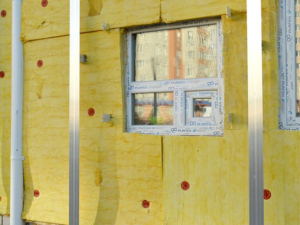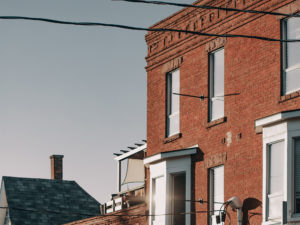Increase Energy Efficiency
A significant amount of pollution comes from the production and use of energy. Investing in energy efficiency reduces greenhouse gas emissions by helping your home or business use electricity and natural gas more efficiently – conserving energy, reducing carbon dioxide emissions, and lessening the need for new utility infrastructure.
There are a multitude of ways to increase your energy efficiency at home or business. Drastic reductions in heating, cooling and electricity costs can be accomplished through very simple changes. Sealing and insulating your home is one of the most cost-effective ways to make a home more comfortable and energy-efficient, and you can do it yourself. A tightly sealed home can improve comfort and indoor air quality while reducing utility bills. As much as half of the energy used in homes goes toward heating and cooling so when a house is better insulated, energy bill costs are significantly reduced.
If you do have the ability to spend more on energy-efficient appliances such as installing a tankless water heater, the upfront costs are outweighed by significant energy savings in the long run. Energy efficiency can be addressed at any scale, from free behavior changes or low-cost measures to expensive retrofits
TIPS TO INCREASE ENERGY EFFICIENCY:
- In an existing house, the first step is to conduct a home energy assessment. These surveys are used to find out how your home uses energy and determine the best ways to cut energy use and costs. You’ll save energy and money, and your home will be more comfortable and durable.
- Remember rebates! Many utilities offer various rebate options for the purchase of energy-efficient appliances.
- Seal air leaks and weatherize doors and windows. A few inexpensive tubes of caulk, foam sealant, and weatherstripping can increase the efficiency of your heating and cooling systems.
- Check your mechanical systems annually. Keep water heaters, furnaces, air conditioners, ventilation systems, and gas fireplaces tuned-up for efficient operation. Clean or replace filters in your furnace and central air conditioner every month for increased operating efficiency and longer life.
- Install a programmable thermostat. These devices automatically lower the room temperature while you’re sleeping or away from home.
- Plant a tree. One well-placed shade tree can reduce the need for air conditioning energy.
- Switch to compact fluorescent light (CFL) bulbs or LEDs (light emitting diodes). They last longer than ordinary incandescent bulbs, and they use less energy. CFLs do contain a small amount of mercury and require proper disposal, however it is less mercury than would be emitted by a coal-fired power plant to light an incandescent bulb for the same amount of time.
- Install a water-saving showerhead. You will save energy by heating less water and also save water. You can use less energy if you wash clothes in cold water.
- Turn down your water heater to 120 degrees. And when you go on a trip, set your water heater to the lowest setting.
- When replacing old appliances and electronics, look for the ENERGYSTAR label — these products use less energy than standard products.
- Turn appliances off. Standby modes on televisions, stereos, computers and battery chargers continue to draw power if not fully turned off. Unplug chargers and use outlet switches to turn off entertainment systems and other equipment when not in use.
- Use smaller kitchen appliances whenever possible. Microwaves, toaster ovens and slow cookers can use 75% less energy than a large electric oven.
- Get rid of that extra refrigerator or freezer. It could be adding more than $100 to your electric bill every year.
Resources
Did you take this action? Report it!
Help us show our collective community impact by reporting that you took this action.



